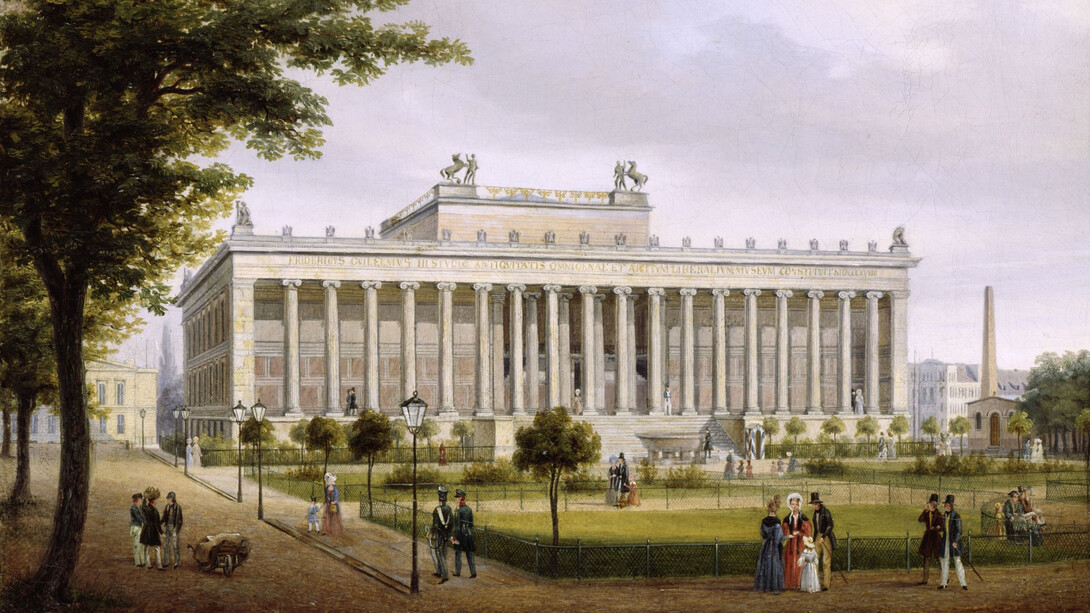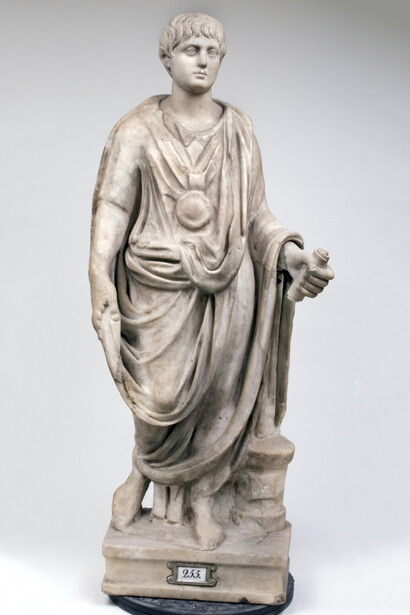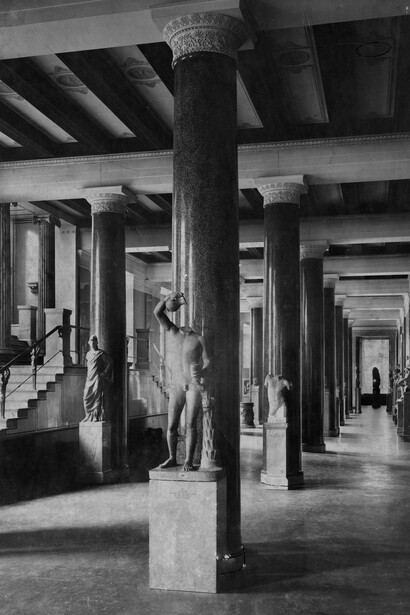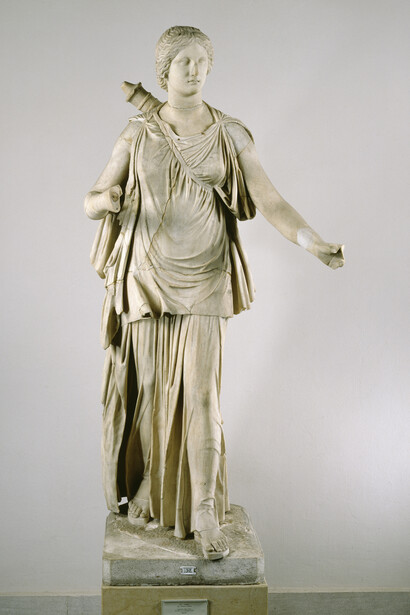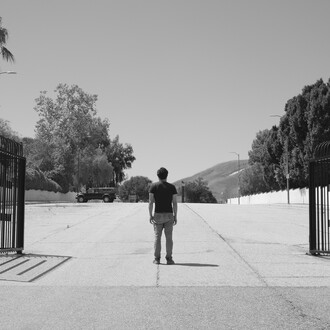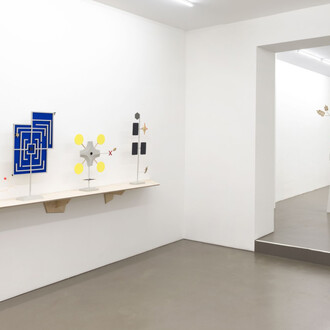For many visitors to Berlin, touring the city’s Museumsinsel (Museum Island) is an essential part of their itinerary. After opening in 1830, the then-Royal Museum quickly became a major attraction. However, the experience of visiting a museum was very different at that time. The special exhibition on the Altes Museum’s upper floor provides fascinating insights into the museum’s beginnings. It shows a selection of antiquities displayed in its first permanent exhibition in 1830.
The cornerstone for the museum designed by Karl Friedrich Schinkel in Berlin’s Lustgarten was laid on 9 July 1825. Just five years later, on 3 August 1830, the first public museum in Berlin and Prussia opened its doors. The Altes Museum quickly developed into a popular destination and has remained an important institution for basic research in archaeology. The exhibition sheds light not only on the structural challenges faced by Schinkel and his innovative solutions but also on the contemporary societal context and the very different appearance at the time of the exhibition rooms, which were severely damaged during the Second World War. A large-scale model at the centre of the exhibition depicts Schinkel’s original building, of which only a few pictorial representations from the museum’s founding period and photographs from the 19th century survive.
Schinkel’s stroke of genius
The Altes Museum truly marked a turning point in the architectural history of public buildings dedicated to art. A structure was conceived solely as an art museum for the first time. Karl Friedrich Schinkel created a building style that was to characterise the design of museums for decades to come. As an architect, Schinkel faced major technical and financial challenges while constructing the museum, for Prussian King Frederick William III demanded extreme economy, which necessitated the development of innovative solutions that were also cost-effective.
Ancient art – and old masters
While the basement floor housed small antiquities, especially vases, bronzes, and terracottas, as well as gems, cameos and coins, the main level with its rotunda was dedicated to ancient (primarily Roman) sculptures and the upper storey to the royal painting gallery. For curatorial and conservational reasons, the latter can only play a minor role in our exhibition, but will feature prominently in a major anniversary exhibition planned for 2030 at the James-Simon-Galerie.
The middle class’s enjoyment of art and thirst for knowledge
The museum’s opening coincided with the rise of the middle class and propagation of new educational ideals. The public wanted to be able to view art easily, and King Frederick William III promoted this idea for the enlightenment of his subjects. The museum quickly became a favourite destination for the educated middle class well beyond Prussia’s borders. But how accessible to the public was it really? What types of visitors flocked to the museum, and which artworks particularly interested them?
A glimpse into the future
The special exhibition shows a cross-section of the artworks displayed in the Altes Museum’s first presentation. Sculptures, vases, bronzes and terracottas tell the story of a collection that still inspires visitors. Yet, it has not been conceived purely as a retrospective. It also casts a glimpse into the future after the building’s urgently needed general refurbishment. Therefore, we ask the public: How should a museum continue to evolve to inspire future generations with the art of antiquity?
